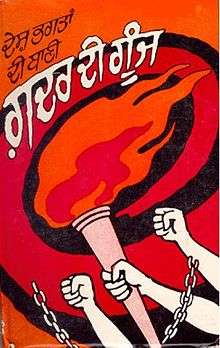Sidney Rowlatt
.jpg)
Sir Sidney Arthur Taylor Rowlatt KC KCSI PC (20 July 1862 – 1 March 1945) was an English lawyer and judge, best remembered for his controversial presidency of the Rowlatt Committee, a sedition committee appointed in 1918 by the British Indian Government to evaluate the links between political terrorism in India, especially Bengal and the Punjab, and the German government and the Bolsheviks in Russia. The committee gave rise to the Rowlatt Act, an extension of the Defence of India Act 1915
Career
Rowlatt was the son of A. H. Rowlatt of Alexandria. He was educated at Fettes College and King's College, Cambridge where he was a distinguished classics scholar.[1] After graduation, he became a fellow of his college and taught high classics for a while at Eton where he was popular with his students.He decided to take up the law and was called to the Bar by the Inner Temple in 1886. He joined the Oxford circuit but made slow progress, devilling for Robert Finlay. When William Danckwerts took silk in 1900, the post of junior counsel to the Inland Revenue fell vacant and Finlay recommended Rowlatt. Then, in 1905 Finlay, now Attorney-General, gave him the post of Treasury devil, a role in which Rowlatt excelled with his energy and affability. He became a bencher of the Inner Temple in 1906 and later its Treasurer.
Rowlatt was appointed Recorder of Windsor and, in 1912, a judge of the King's Bench Division of the High Court. He was a courteous and scholarly judge, quick to see a point and unafraid to make up his mind.
In 1918 he chaired the inquiry into "Criminal conspiracies connected with revolutionary movements in India", the Rowlatt Committee. The inquiry led to the controversial Rowlatt Act in 1919. This unpopular legislation provided for stricter control of the press, arrests without warrant, indefinite detention without trial, and juryless in camera trials for proscribed political acts. The accused were denied the right to know the accusers and the evidence used in the trial.[2] Indian nationalists called for protest against the Rowlatt Act, which led to an unprecedented response of unrest and protests. In the Punjab, this unrest led to the Amritsar Massacre.[3] Accepting the report of the Repressive Laws Committee, the Government of India repealed this act in March 1922.[4]
Rowlatt also heard murder trials, including that of George Stagg, who was found guilty of the murder of Aston Villa footballer, Tommy Ball in November 1923.[5]
He retired in 1932 and was sworn of the Privy Council, sitting several times in the Judicial Committee. He chaired the Royal Commission on Betting (1932–33) and during World War II, he sat as chairman of the General Claims Tribunal.
Personal life
Rowlatt married Elizabeth Hemmingway in 1890 and the couple had four sons and two daughters. His son John Rowlatt was also a lawyer, who specialised in drafting tax legislation.[6]
Media correspondent Justin Rowlatt is Sidney's great-grandson; in February 2015, Justin became the BBC's South Asia correspondent, posted in New Delhi, and in an article in August 2017 analysed his great-grandfather's drafting of the Rowlatt Act and the events it generated in the context of post-1947 India-UK relations.[7]
Honours
Notes
- ↑ "Rowlatt, Sidney Arthur Taylor (RWLT880SA)". A Cambridge Alumni Database. University of Cambridge.
- ↑ Vohra, Ranbir (2001). The Making of India: A Historical Survey, 2nd Ed. Armonk, New York: M.E. Sharpe. ISBN 0-7656-0711-5. p. 126.
- ↑ Swami P (November 1, 1997). "Jallianwala Bagh revisited". The Hindu. Archived from the original on 28 November 2007. Retrieved 2007-10-07.
- ↑ The history of British India: a chronology, John F. Riddick, 2006
- ↑ Footballer Murdered – Ex-policeman sentenced to death, www.londonhearts.com (Newspaper article), 19 February 1924, retrieved 4 November 2011
- ↑ (PDF) http://www.francisbennion.com/pdfs/non-fb/2011/2011-001-nfb-btr-rowlatt.pdf. Retrieved 17 July 2018. Missing or empty
|title=(help) - ↑ Rowlatt, Justin (13 August 2017). "Independence: Do Indians care about the British any more?". BBC News. Retrieved 13 August 2017.
References
- Obituary, The Times, 3 March 1945, p.7, col E
- Lovett, Sir Verney (1920), A History of the Indian Nationalist Movement, New York, Frederick A. Stokes Company, ISBN 81-7536-249-9
- Sarkar, B.K.; Lovett, Verney (1921), "A History of the Indian Nationalist Movement.", Political Science Quarterly, 36 (1): 136–138, doi:10.2307/2142669, JSTOR 2142669 .
- Tinker, Hugh (1968), "India in the First World War and after", Journal of Contemporary History, 3 (4): 89–107 .
